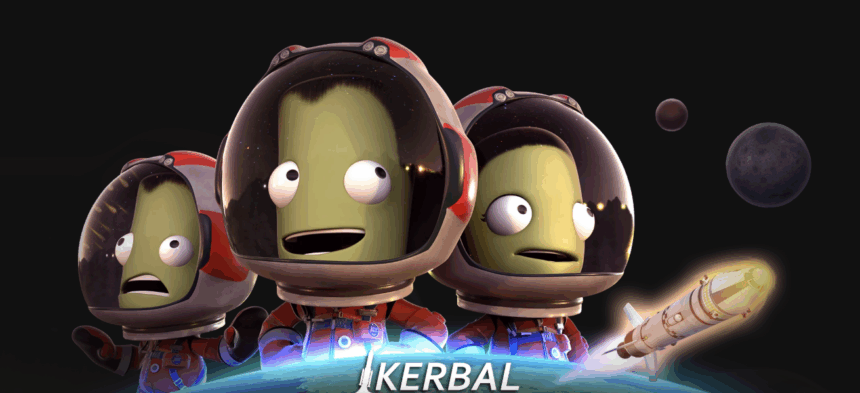In this post I want to explore the Best Games That Simulate Space Based on Real Science, giving players a truly convincing taste of the universe.
What sets these titles apart is their rigorous application of physics, astronomy, and engineering.
Whether you’re a lifelong space buff or simply curious about the cosmos, each of these experiences marries the thrill of discovery with the precision of science.
Key Points & Best Games That Simulate Space In Scientifically Accurate Ways List
| Game Title | Key Scientific Accuracy Feature |
|---|---|
| Kerbal Space Program | Realistic orbital mechanics, delta-v calculations, and Newtonian physics used in spacecraft design. |
| Universe Sandbox | Simulates gravitational interactions, planetary collisions, and orbital dynamics in real-time. |
| Elite Dangerous | Real-scale Milky Way galaxy with accurate star systems and orbital physics. |
| SpaceEngine | Procedurally generated universe based on current astrophysical theories and data. |
| Orbiter 2016 | Realistic spaceflight simulator with precise trajectory planning and space shuttle dynamics. |
| Children of a Dead Earth | Focuses on real space combat physics, including propulsion systems and radiation shielding. |
| Outer Wilds | Accurately portrays gravity wells, time dilation, and orbital dynamics in a small solar system. |
| Astroneer | Uses real planetary physics like limited atmosphere and gravity differences across planets. |
| Reentry – An Orbital Simulator | Detailed simulation of NASA missions with realistic cockpit procedures and orbital mechanics. |
| Take On Mars | Accurate Martian environment simulation, including gravity, terrain, and rover physics. |
10 Best Games That Simulate Space In Scientifically Accurate Ways
1.Kerbal Space Program
Kerbal Space Program is celebrated for bringing the complexities of spaceflight into the hands of players without sacrificing scientific integrity. Gamers create rockets and space stations, balancing rocket equations, drag losses, and orbital insertion burns just like mission planners do.
The underlying engine faithfully reproduces Newton’s laws, making each burn, landing, and rendezvous a lesson in delta-v budgeting.
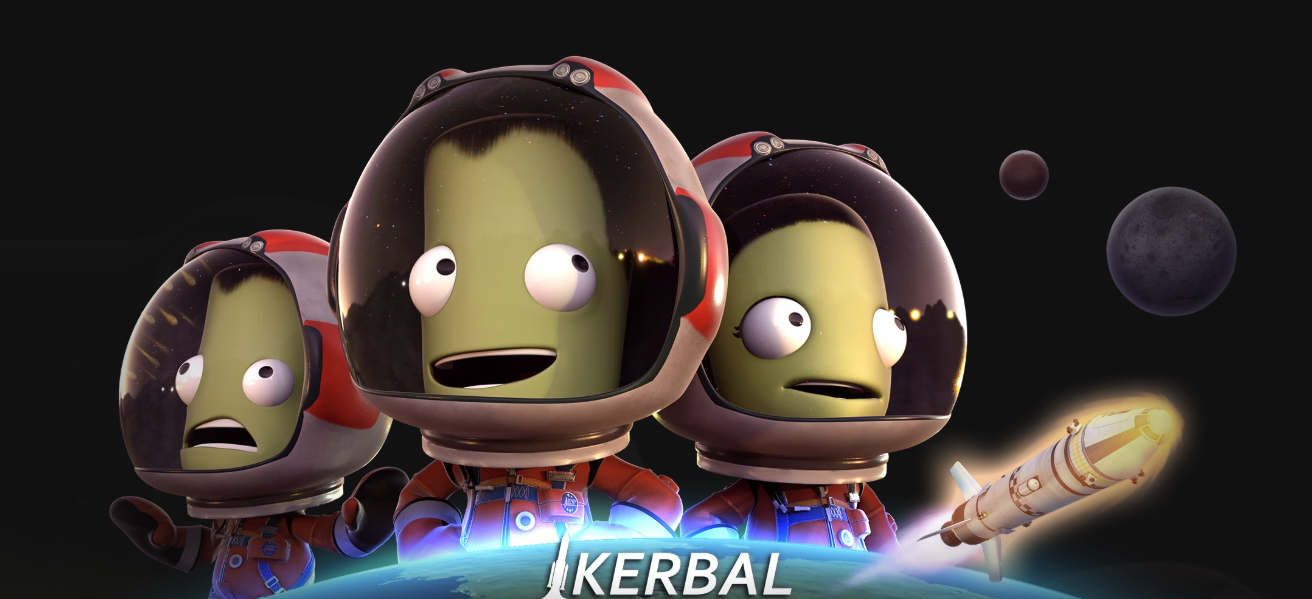
The sandbox environment invites trial and error, while the career path adds the hurdles of money, contracts, and research. The cheerful, green-skinned Kerbals and silly animations provide levity, but the rockets obey the same rules as the ones leaving Earth for Mars.
By marrying rigorous physics with joyfully addictive play, Kerbal Space Program makes the dream of flight to the stars both fun and informed.
| Feature | Description |
|---|---|
| Orbital Mechanics | Accurate simulation using Newtonian physics and delta-v principles. |
| Rocket Design | Custom spacecraft built with real-world engineering constraints. |
| Atmospheric Reentry | Heat, drag, and trajectory must be carefully managed. |
| Career Mode | Budget, R&D, and mission planning mechanics mimic real space programs. |
| Educational Value | Teaches physics, aerospace engineering, and mission planning effectively. |
2.Universe Sandbox
Universe Sandbox combines the beauty of the cosmos with rigorous physics, inviting you to interact with the universe at an astronomical scale. You can grab a star, fling a planet, or stretch a galaxy, and the simulation responds with the same laws of inertia, gravity, and radiation that govern the real cosmos.
You might drop a 10-kilometer asteroid onto a budding Earth and watch the atmosphere boil away, or nudge a runaway planet into a tighter orbit and see ice caps vanish over centuries. Every simulation considers mass, velocity, and gravity, scaled down to fractions when needed and magnified when dramatic color replaces the void.

Data from NASA and contemporary astrophysical catalogues fills the simulation with orbital parameters, climate models, and the evolving states of distant star clusters.
At once a sandbox and a classroom, Universe Sandbox turns calculations into collisions, orbits into sunsets, and concepts into wonder, inviting you into a physics-infused cosmos you can shape with a click.
| Feature | Description |
|---|---|
| Real-Time Simulation | Models gravity, collisions, and motion at astronomical scales. |
| Planetary System Creation | Users can build solar systems and observe orbital dynamics. |
| Scientific Accuracy | Uses real data and physics for celestial mechanics and climate models. |
| Customizable Scenarios | Allows hypothetical simulations like star collisions or Earth destruction. |
| Educational Focus | Great for understanding astrophysics, orbital physics, and planetary science. |
3.Elite Dangerous
Elite Dangerous stands out for its rigorously realistic portrayal of the cosmos, unfurling a fully scaled Milky Way containing upwards of 400 billion star systems.
Surveyed bodies whose masses, temperatures, and radii are directly drawn from observatory catalogues coexist with others born from procedural rules reflecting stellar evolution and gas dynamics.
Players feel the gravity well of each planet or star as the game integrates Keplerian orbits and time dilation for light across billions of kilometres.
Thrusters and ion drives must be balanced against the ship’s mass and real-time fuel burn, constraining the radius of each light-year jump.
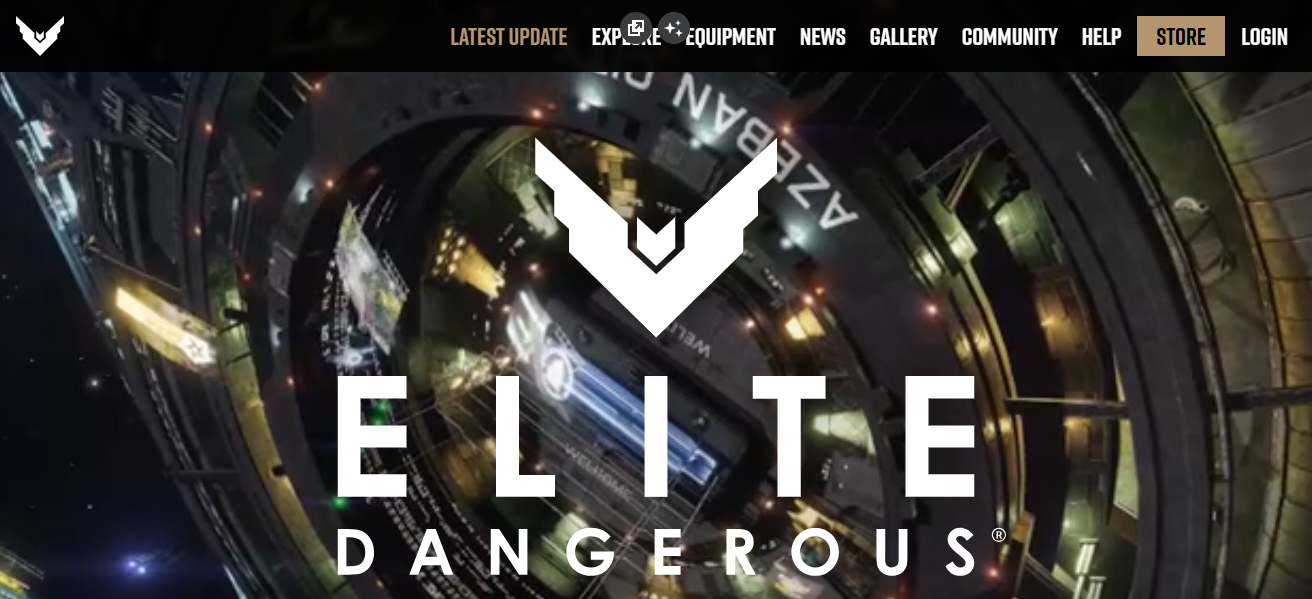
Fictitious mechanics, chiefly the Alcubierre warp, are carefully insulated so that the underlying physics remains perceivable.
Thus, the experience of quietly cruising between sapphire nebulae or hugging a neutron star’s accretion disc is both thrilling and believably rooted in physics, rewarding pilots with a sense of genuine interstellar spaceflight.
| Feature | Description |
|---|---|
| 1:1 Milky Way Recreation | Includes 400+ billion star systems based on real astronomical data. |
| Orbital Mechanics | Gravity and movement based on real physics models. |
| Realistic Navigation | Fuel consumption, mass, and jump range impact travel. |
| Star and Planet Data | Some systems are modeled on real celestial data (like Sol and Alpha Centauri). |
| Immersive Cockpit Experience | Advanced ship controls and HUD with real-time feedback and diagnostics. |
4.SpaceEngine
SpaceEngine is an exceptional 3D space simulator that invites users to wander the cosmos through an ever-expanding, scientifically faithful, real-time environment.
By merging verified astronomical observations with smart procedural algorithms, it unfolds a boundless, interactive universe populated by billions upon billions of galaxies, stars, worlds, and moons.
The engine computes orbital mechanics, light propagation, and celestial dynamics with high precision, so every trajectory is true to nature.
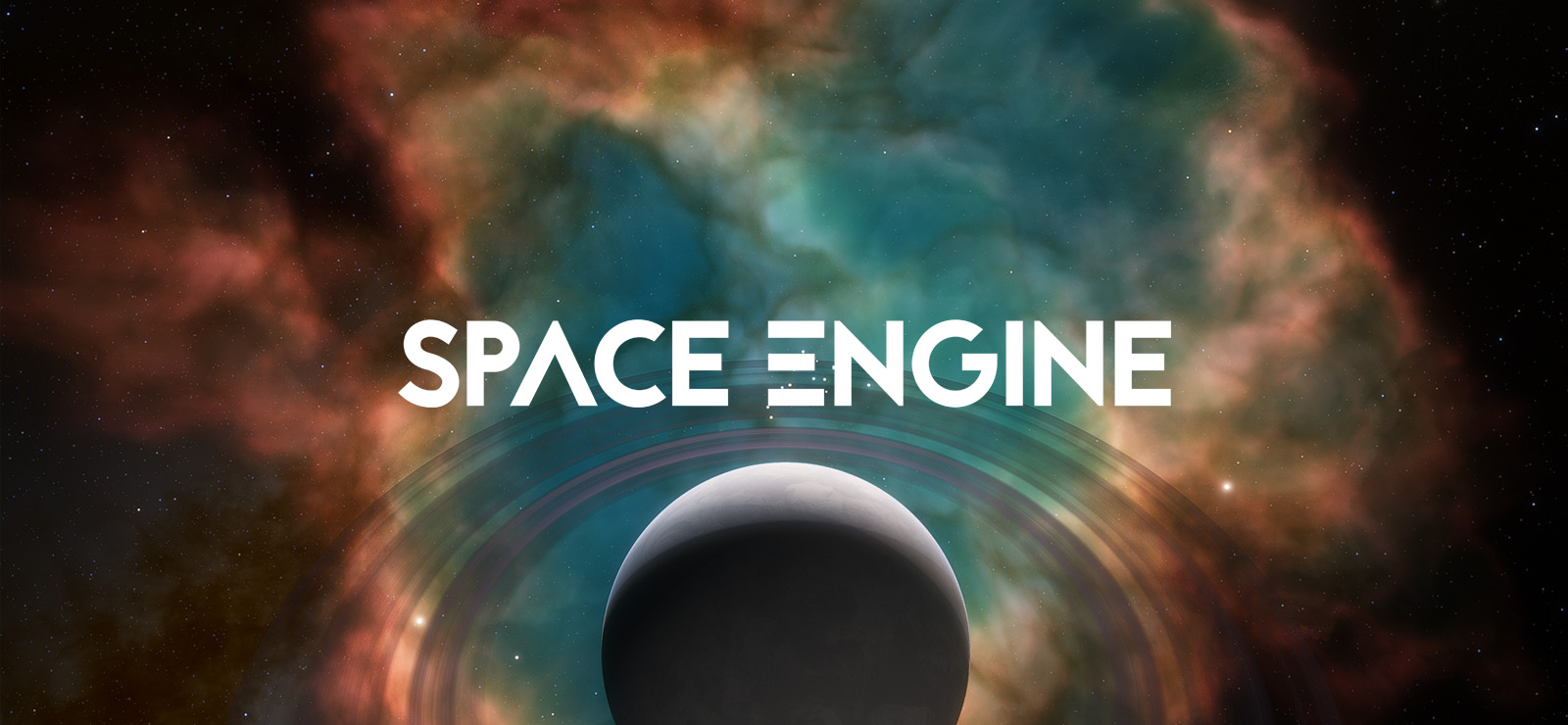
Viewers can study vivid planetary atmospheres, rugged surfaces, and the nuanced pulse of stars from any juxtaposition—from the heights of a planet’s atmosphere to the emptiness of intergalactic void.
Grounded in leading cosmological models, SpaceEngine works equally well as a rigorous teaching companion and as an awe-inspiring digital observatory for devoted stargazers.
| Feature | Description |
|---|---|
| Procedural Universe | Billions of stars, planets, and galaxies generated with scientific algorithms. |
| Real Astronomy Data | Integrates data from NASA and ESA for realism. |
| Physics-Based Simulation | Accurate orbital paths, gravity, and light physics. |
| Seamless Exploration | No loading screens between space objects and planetary surfaces. |
| Visualization Tool | Functions as an educational virtual observatory. |
5.Orbiter 2016
Orbiter 2016 is a rigorously realistic spaceflight simulator aimed at enthusiasts who seek an authentic feel for space travel governed by scientific rigor.
It models orbital mechanics with fidelity, recreates actual vehicles from the Shuttle to the Apollo command modules, and relies strictly on Newtonian physics.
Pilots chart trajectories, execute careful orbital transfers, and handle intricate tasks such as rendezvous and mutual docking.

Time warp, a finite supply of propellant, and slingshots around planets mirror the logistical constraints of genuine missions.
While the visuals are straightforward by modern gaming standards, the simulator brings the physics of space travel to the fore, appealing to users who are captivated by the engineering and quantitative principles that drive real exploration.
| Feature | Description |
|---|---|
| Real-World Missions | Simulates actual spacecraft like Space Shuttle, Soyuz, and Apollo. |
| Accurate Orbital Physics | Precise Newtonian mechanics for orbits, transfers, and rendezvous. |
| Navigation Tools | Built-in MFDs (multi-function displays) for trajectory planning. |
| Time Acceleration | Allows time-warping to complete long-duration missions. |
| Educational Use | Ideal for those studying astrodynamics and space navigation. |
6.Children of a Dead Earth
Children of a Dead Earth is a rigorously realistic space war simulator that prioritizes scientific fidelity above all else. Departing from the conventions of most sci-fi titles, it operates on verified physics, orbital mechanics, and engineering realities to choreograph the battlefield.
Each subsystem—thrust, radiator, reactor, and kinetic projectile—tracks real-world laws, and players must account for delta-v budgets, radiation limits, structural loads, and energy draw in every design.
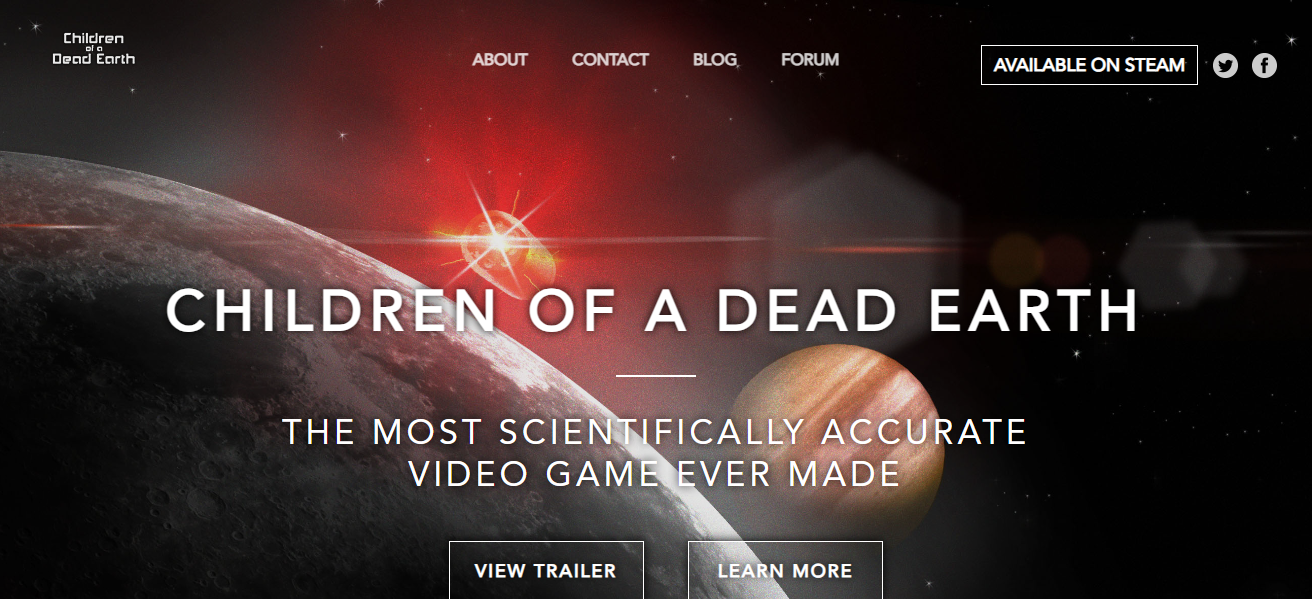
Interplanetary engagements require meticulous calculations of transfer windows and gravity assists. Champions of the genre are drawn to the game for its austere, plausible depiction of future conflict, which challenges the mind as rigorously as the joystick.
| Feature | Description |
|---|---|
| Realistic Space Combat | Uses real science for weapons, armor, and propulsion systems. |
| Physics-Based Design | Every ship component follows engineering constraints. |
| Heat Management | Thermal radiation plays a key role in combat survival. |
| Scientific Accuracy | Simulates nuclear reactors, ion drives, and railguns with precision. |
| Strategy and Engineering | Players must balance performance, mass, and energy in ship designs. |
7.Outer Wilds
Outer Wilds fuses classic sci-fi wonder with deliberate, believable space physics sewn into a lovingly crafted miniature solar system. Bright colors and gentle animations mask a bedrock of real orbital mechanics.
You pilot your tiny, creaky ship according to Newton’s laws—pumping throttle, watching the inertial drift, and timing burns to spiral into a planet’s lagging atmosphere or escape its gravity well.
Each world tugs at you differently: a pebble-dense moon bites hard, a gas giant’s far limb feels softer. Time slips and mineral-rich wormholes twist the fabric of that gravity, letting you feel every decision’s stretch and crunch.

When you leap from planet to planet, the horizon smooths forward with no loading screens, pulling you deeper.
The plot and the poetry of the unknown take the front seat, yet the spacecraft’s humming engine and the fine dance of forces remind you with every safe landing that the sky you chase is, delightfully, the one that physics wrote.
| Feature | Description |
|---|---|
| Gravity Wells | Each planet’s gravity affects navigation and physics. |
| Realistic Spacecraft Physics | Thrust, inertia, and orbit all behave according to Newtonian laws. |
| Time Loop Mechanics | Time travel is rooted in sci-fi, but integrates gravitational effects. |
| Open Exploration | Seamless exploration of an entire solar system with accurate planetary motion. |
| Scientific Storytelling | Combines physics concepts with narrative-driven discovery. |
8.Astroneer
Astroneer invites players on a vivid journey among the stars, blending a cheerful color palette with genuine scientific undercurrents. Each new world you touch is procedurally woven, presenting its own dance of gravity, air pressure, and shifting surfaces.
You’re not climbing into a pure physics textbook, yet the game keeps a respectful nod to reality: a larger planet pulls harder; your backpack carries a ever-more precious air supply; and a sprawling canyon feels steeper on a smaller moon.
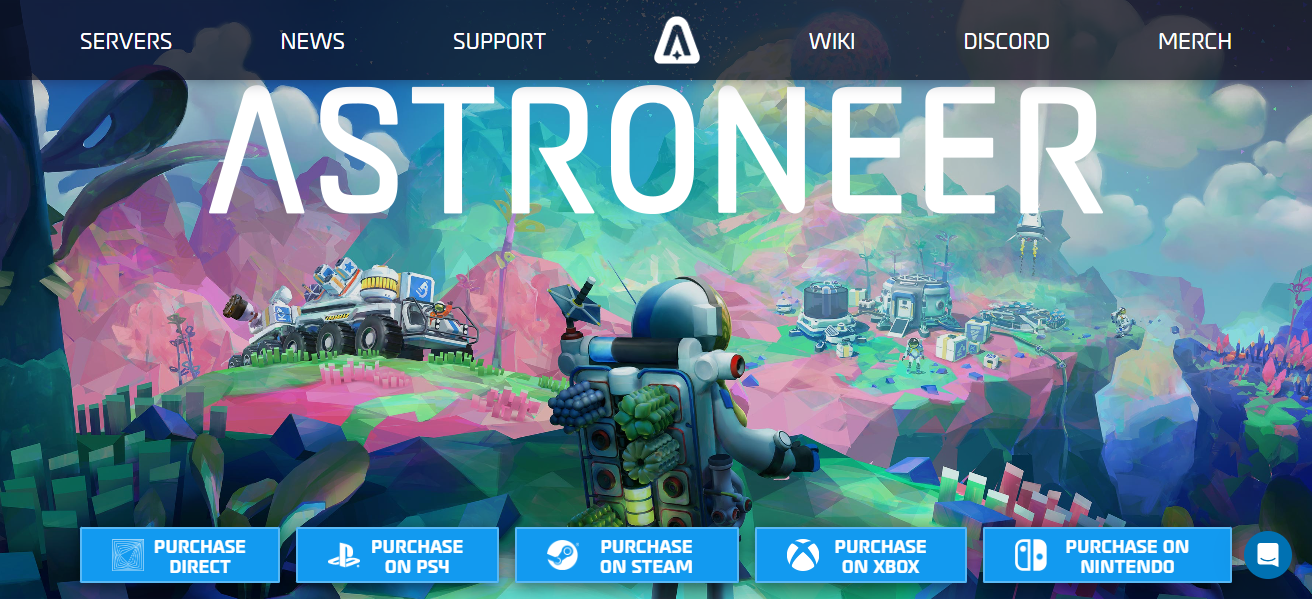
Digging out bite-sized resources and reshaping ancient hills hews to the rhythms of geology, not gadgetry. Stations and rockets grow from a few snapped-on modules, gently coaxing you to sketch supply routes and harvest schedules.
With its playful spirit and occasional unexpected pinch of danger, Astroneer whispers the basics of surviving the void while serving up bright, memorable exploration.
| Feature | Description |
|---|---|
| Planetary Physics | Gravity and atmosphere vary between planets. |
| Base Building and Survival | Includes oxygen systems, power grids, and terrain shaping. |
| Resource Management | Players gather and refine elements to sustain missions. |
| Realistic Scale Differences | Low gravity and different environments affect mobility and physics. |
| Educational Design | Introduces basic science principles in an approachable way. |
9.Reentry – An Orbital Simulator
Reentry – An Orbital Simulator offers an uncompromisingly realistic recreation of historic human spaceflight, from Mercury capsules to the Space Shuttle.
Each mission is rendered with painstaking fidelity to the original systems and cockpit layouts, enabling players to step into the exact procedural environments that mission controllers once managed.
Completing a flight demands mastering the navigation computer, executing precise burn profiles, and troubleshooting backup systems, all while methodical checklists guide you through the same steps the crews once memorized.
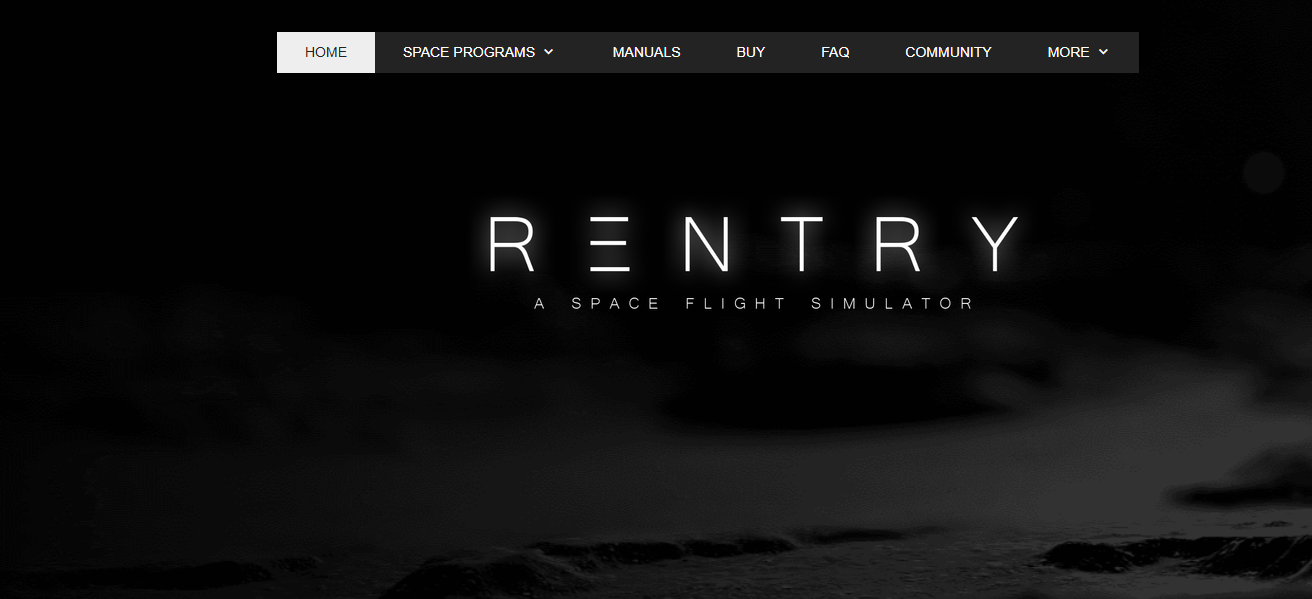
Orbital forces, atmospheric deceleration, and subtle gravitational nuances are modeled with the same rigor used in mission planning, providing a reentry profile that demands the same careful energy management the astronauts confronted.
Reentry is rewarding but uncompromising; newcomers will face a steep climb, yet those who persevere will discover an educational and immersive parallel to the exacting discipline of actual human spaceflight.
| Feature | Description |
|---|---|
| Historical Spacecraft | Features Apollo, Gemini, Mercury, and Shuttle programs with accurate controls. |
| Full Cockpit Simulation | Players interact with real instrument panels and procedures. |
| Realistic Reentry Physics | Simulates heat, angle of descent, and blackout zones. |
| Mission Checklists | Emphasizes procedural learning and precise operations. |
| Training and Tutorials | Designed to teach real astronaut training routines. |
10.Take On Mars
Take On Mars immerses players in a painstakingly accurate simulation of Mars exploration, spotlighting the scientific and engineering hurdles of the endeavor. Commanding rovers, landers, and crewed missions, users pursue objectives that mirror NASA’s actual Martian goals.
The simulation is grounded in verified Martian data: gravitational pull, thin atmosphere, and surface layouts drawn from orbital imaging.
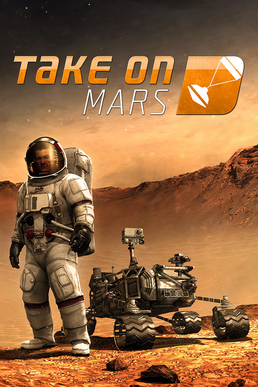
Life-support challenges—managing oxygen, repairing instruments, and navigating dust storms—replicate the relentless pressures faced by future explorers. Instruments respond as they would in reality, and every choice carries consequences.
The result is an interactive laboratory that reveals the delicate balance required to sustain human life and knowledge on the planet next door.
| Feature | Description |
|---|---|
| Mars Surface Simulation | Terrain data based on real Mars satellite imagery. |
| Physics-Based Environment | Includes gravity, dust storms, and radiation hazards. |
| Equipment Management | Rovers and habitats require power, maintenance, and oxygen. |
| Survival Elements | Players must manage life support, pressure, and CO₂ scrubbing. |
| Space Program Campaign | Progress from robotic missions to human colonization. |
Conclusion
In summary, the rigorously researched space simulation titles available today fuse learning with play, weaving genuine physics, astrophysics, and engineering principles into every control and animation.
Whether mastering gravity assists in Kerbal Space Program or navigating the actual surface pressure andcomposition data in SpaceEngine, players engage interactively with the formidable realities that already shape missions beyond Earth.
As such, they speak equally to future aerospace engineers perfecting their intuition and to any wonder-driven player wanting to drift through the stars with purpose.
FAQ
What makes a space game scientifically accurate?
Realistic physics, orbital mechanics, gravity simulation, accurate planetary data, and adherence to known science principles.
Which game is best for learning orbital mechanics?
Kerbal Space Program offers hands-on experience with delta-v, thrust, and Newtonian physics.
Are these games suitable for beginners?
Some, like Astroneer and Outer Wilds, are beginner-friendly. Others, like Orbiter 2016 or Reentry, require more technical knowledge.


